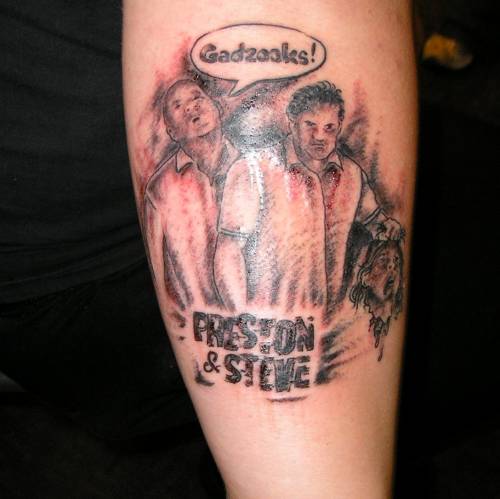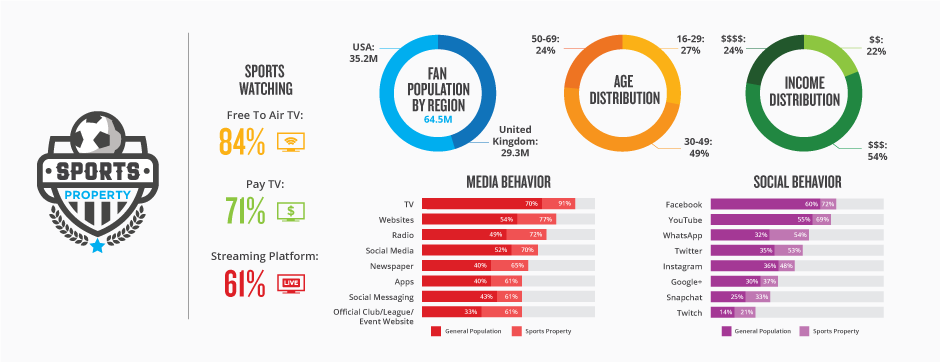
The blacksmith and the artist
Reflect it in their art
They forge their creativity
Closer to the heart
Yes closer to the heart
- RUSH
We all are given to clichés at times. And one of my crutches in consulting work has always been to default to sport analogies. Of course, not everyone is into sports, so when I mention that a station is “in the red zone” or that a morning show needs to “leave it all on the field,” I realize not everyone appreciates these brilliant comparisons between sports and radio.
But then Tom Taylor sent me this great story from The New York Times and it reminded me I’m not crazy after all. A feature story by Ken Belson – “What Makes Someone A Fan” – is the story of Rich Luker, a social psychologist who researches the relationships between fans and the teams and players they love.
Tom sent me the story a) because he knew I’d appreciate it, and b) because it turns out Luker is from Michigan, a Detroit Tigers fan, a University of Michigan grad, and someone who truly understands the power and appeal of Classic Rock. For me, an irresistible combination, and something I thought you’d enjoy, too.
For Luker, the Internet and digital media are incidental to becoming a fan – of a radio station, a style of music, or sports. It’s about the human condition and our emotions, notes Luker – and has nothing to do with social media or gadgetry.
When Luker thinks about the way sports teams are evolving, his solution is to not get caught up in the technology.
“I do all I can to encourage sports to continue to be sports in the same way classic rock is classic rock.”
-Rich Luker
That’s because true fandom is not measured in sales of concert tickets or merch. True, it’s an indication of popularity, but not passion. Like the ratings, it’s an indication of rank, but not the engagement true fans shows for their teams – or for their radio stations.
 Luker likens a fan getting a tattoo of their favorite team’s insignia as a more important indicator than luxury suite revenue. There’s a difference between making a team, a player – or a radio station – part of someone’s identity.
Luker likens a fan getting a tattoo of their favorite team’s insignia as a more important indicator than luxury suite revenue. There’s a difference between making a team, a player – or a radio station – part of someone’s identity.
How does Luker determine the inner qualities of what truly makes a fan? Just like we do with Techsurvey, he tracks fans in sports team databases. The key is to understand why devotees act like they do, and then unlock the passions that can turn them into super fans.
Luker is a big believer in surveying your biggest fans – your P1s. Once again, he and I are on the same page. He’s subscribes to the theory that sports and Classic Rock can “provide the social context that is being lost on the internet.”
And he speaks to the temptation among sports teams – as well as those of us in radio – of overreaching with technology, rather than focusing on the “heart of their games.” Luker believes brand managers need to do both.
This idea of staying “closer to the heart”goes to the core of what motivates those who love sports, as well as music.
If your music is great, you will have fans, not because you have spent time chatting on social media.
- Bryan Adams
And Luker believes that strictly relying on quantitative research – rather than talking to fans – is a limited endeavor. That’s another reason why focus groups and one-on-one interviews continue to be an important part of the Jacobs Media arsenal. You can always go back and gather your big boxcar numbers. But the key – as Luker points out – is understanding fan behavior: why they do what they do and feel what they feel.
groups and one-on-one interviews continue to be an important part of the Jacobs Media arsenal. You can always go back and gather your big boxcar numbers. But the key – as Luker points out – is understanding fan behavior: why they do what they do and feel what they feel.
That’s obviously a bit trickier than measuring “likes,” time-spent listening, occasion-setting, or analytics. Luker encourages sports executives – as well as radio programmers – to uncover the fan stories that drive their unbridled passion.
Ironically, Nielsen introduced a product last week – “Sports Fan Insights” – that would probably cause Rich Luker to raise an eyebrow.
It’s described as “a connected online platform to provide sports properties, sponsor brands and event organizers with a comprehensive view of fans’ interest, media consumption behaviors, brand attitudes and purchasing habits from around the world.”
Nielsen says this new sports service combines and integrates datasets from across the industry – and from a dozen countries around the world – including the U.S. An additional 20+ countries will be added to the program next year.
 Every piece of the Nielsen program is quantitative, measuring purchasing, sports consumption, brand awareness and image, and sponsorship activation. But it makes you wonder if Nielsen can provide this product for sports teams, why they don’t roll one out for radio.
Every piece of the Nielsen program is quantitative, measuring purchasing, sports consumption, brand awareness and image, and sponsorship activation. But it makes you wonder if Nielsen can provide this product for sports teams, why they don’t roll one out for radio.
In Rich Luker’s world, this is yet another product attempting to use numbers to explain and define passion – a difficult, if not impossible process. In the pursuit of true fans, the sports community – as well as the broadcast radio industry – needs a better understanding of what moves people.
What is, in fact, closer to their hearts.
With special appreciation to Tom Taylor whose head and heart are still very much in the game.
- Media And Technology In 2025: Believe It Or Not! - April 18, 2025
- In Radio, You Just Never Know - April 17, 2025
- The Secret To Making A Great Podcast (And Great Radio) - April 16, 2025




Leave a Reply